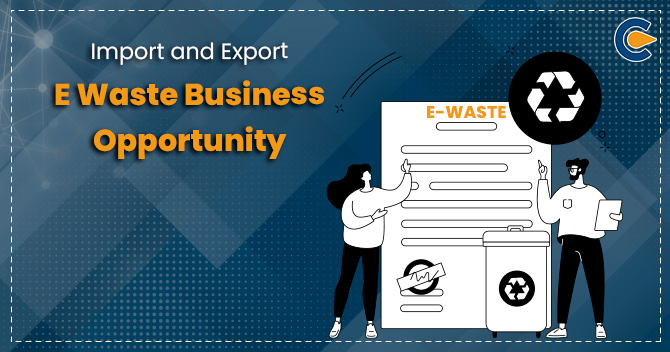Due to the lack of protocols established for managing contaminated barrels, containers, and liners, and the limited availability of De-Contamination Facility handling chemicals and waste in many states, a large portion of this type of waste ends up in the informal, unregulated sector that has sprung up in the chemical estates. The waste generated from these activities is often discharged into nearby bodies of water, resulting in pollution. There have been several incidents where inadequate handling and cleaning of these items has led to fires or explosions, causing damage to life and property. Moreover, De-Contamination Facility for containers handling wastes/ chemicals carried out by unregulated sectors cannot guarantee complete decontamination. If these items are used for other purposes, such as storing food or water, they could pose a danger to end-users.
Aim of SOP for De-Contamination Facility Handling Chemicals
The purpose of this SOP is to create a set of standardized procedures for managing barrels, containers, and liners that have been contaminated with hazardous chemicals or waste. These procedures include labelling, handling, and decontamination, and they are designed to prevent potential hazards associated with handling such items in informal, unregulated sectors. In addition to applicable regulatory requirements and industry standards, this SOP provides specific procedures and standards to be followed.
Roles and Responsibilities of Stakeholders
Generators: The roles and responsibilities of the generators of the contaminated containers/ barrels/ liners/ are as follows:
- Labelling requirements for contaminated drums/barrels/containers/liners
- The labelling must include the following information:
- Generator’s information (name, address, contact number)
- Date when the drums/barrels/containers/liners were generated
- Description and characteristics of the waste material previously contained
- If the final characterization of the waste material is unknown, a notification label must be placed on the drum
- If the waste material characterization is unknown, a compatibility test must be carried out by the drum decontamination facility before decontamination, and a record must be maintained.
- The label material should be weatherproof and long-lasting
- Labels should be placed in the middle on the outside of the container to avoid weathering.
- Each contaminated barrel/container/liner must be recorded in the field notebook used by the person responsible for labelling the waste.
- If multiple containers are accumulated together, labels on the top of the containers are allowed.
Drum Decontamination Facility
Location: A common decontamination facility must be present in each chemical cluster or the vicinity of such a cluster, and it cannot be in a remote or scattered location. The common decontamination facility must be established along with a common TSDF/CHWIF. The general siting criteria should be followed for the common decontamination facility.
Legal Requirements for De-Contamination Facility Handling Chemicals
Pollution NOC: The CTE/CCA shall be granted only for a drum decontamination facility, and no other production activities shall be allowed on the site.
HWM Authorisation: The unit must obtain authorization and a passbook in accordance with the Hazardous and Other Waste (M&TM) Rules 2016.
Preliminary Hazard Analysis: such analysis must be conducted for each decontamination facility, and the operator must conduct an internal safety audit every year. An external safety audit must be carried out by a reputable expert agency once every two years, and the results must be submitted to the Board.
Self-Declaration: The occupier of the decontamination facility must submit a notarized undertaking stating that the unit will comply with all provisions of the CPCB[1] guideline on “Implementing Liabilities for Environmental Damages due to Handling & Disposal of HW and Penalty.”
Documents and Certificates Required For De-Contamination Facility
The certification required De-Contamination Facility for containers handling wastes/ chemicals. To obtain authorization or certification for hazardous waste management, the following documents need to be submitted:
Consent to Establish, obtained from the State Pollution Control Board (SPCB) under the Air Act, 1981 and the Water Act, 1974.
Proof of Certificate of registration granted by the District Industries Centre (DIC) or any other government agency authorized for this purpose.
Proof of installed capacity of plants and machinery granted by the District Industries Centre or any other government agency authorized in this regard.
Certificate of compliance: for effluent, disposal of waste, and emission standards and treatment obtained from the SPCB or the respective Zonal Office of CPCB.
Additional Documents Required By De-Contamination Facility Handling Chemicals
In addition to the above documents, there are others required for hazardous waste management authorization by De-Contamination Facility handling chemicals:
- For Private Limited And Public Limited Companies:
- Identity and address proof of directors, such as PAN and Aadhaar.
- Proof of ownership or lease or rental agreement of the premises.
- NOC (No-Objection) certificate from the site owner.
- Telephone Bill/ Electricity Bill /Water Bill.
- MCD License.
- Waste Collection Agreement.
- Memorandum of Association of the company.
- Certificate of Incorporation (CIN).
- PAN card of the company.Board Declaration for Authorized Signatory.
- For Proprietorship Or Partnership Firms:
- PAN Card and Aadhaar card of the proprietor/partners.
- Rent/Lease/Ownership of the office location.
- Electricity Bill/ Water Bill /Telephone Bill.
- Waste Collection Agreement.
- MCD License
Conclusion
De-Contamination Facility handling chemicals and hazardous waste are essential for handling hazardous waste and chemicals in an environmentally safe and responsible manner. These facilities provide a specialized service for cleaning and decontaminating drums, containers, and other vessels used for storing hazardous waste or chemicals. Establishing common decontamination facilities within chemical clusters or their vicinity ensures that hazardous waste is managed efficiently and safely, reducing the risk of environmental contamination and harm to human health. To ensure that these facilities are designed and operated effectively, consultation with experts is necessary. Such experts can provide valuable guidance in conducting preliminary hazard analyses, safety audits, and environmental impact assessments, among other things. With their help, De-Contamination Facilities can be established and operated in a safe and eco-friendly manner.
Read Our Article: Hazardous Waste Management Authorization Norms: An Overview











